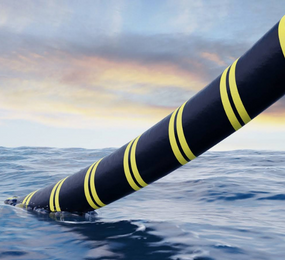As the world is transitioning into a sustainable energy era, many innovations in technology are occurring on both existing and new energy systems so as to meet up with the net-zero carbon emission target. The floating solar energy sector is one of them! The floating PV system is constantly gaining prominence and establishing itself as one of the growing energy sectors both locally and worldwide.
A floating photovoltaic (FPV) system is an emerging but rapidly booming energy sector we should look out for. It is clear that the Floating Solar PV market has great potential due to the huge revenues it generated so far considering that it is still at a becoming stage. A floating PV System possesses numerous benefits as it is being stationed in the water. It also conserves water and produces a higher amount of electricity than its conventional counterpart; The land-based solar system. However, the system is constantly evolving as new tools, processes, and techniques are established globally. These new practices range from installation, manufacturing, maintenance, and many other practices. For instance, some installation techniques are costly and still not efficient. It is time to know learn more about how to navigate through some cost-consuming tools commonly used in the floating PV installation system.
Let’s dive a bit into the Floating PV System; What are they composed of?
A typical FPV system consists of a floating platform, anchoring and mooring structures, PV modules, power converter, and cables as well as connectors. A floating system consists of the structure and the floater where the PV system is mounted.
Anchoring and Mooring structure as the name insinuates holds the entire Floating PV system in a place preventing it from moving away. This part is crucial in floating PV system installation as an error has a catastrophic effect since the entire Floating PV system is not stationary. The design of the anchoring and mooring system is based on the wind flow, float type, water density, and level variance. Bank, bottom, or piles are different types of anchoring and mooring designs. While most PV systems are anchored by the bottom, it is worthy to note that bank installation design is suitable for small ponds. No matter the design type, the anchoring, and mooring system is meant to last for more than 25 years after installation.
PV modules: PV panels are mounted on the floats at a fixed tilt angle in most large-scale floating PV plants. It plays a role in the energy conversion system. Although there are ongoing researchers as well as innovations in making more efficient PV modules, crystalline solid PV modules are commonly used across the globe.
Cables, connectors, and power converters: Subsea cables are used for the transportation of heavy amounts of electric power from the power grid too long distances, and the power converters are used to send the energy back to the grid if there is a need for storage. notably. the entire Floating PV installation technique is somewhat similar to the land-based ones though there are few exceptions in terms of floaters and anchoring structures.
Floating Solar Installation: De-risking as a Tool to be Cost-Effective
Risk mitigation is highly recommended when handling floating PV projects, given their
enormous initial capital costs. The de-risking technique is used mainly for green projects which offers a lot of benefits;
-
Reduced interest cost
-
Infrastructure Investment Trust
-
Provides long-term investment Security
-
Lowers risk premium cost to the developer
-
Enhances project credit rating
-
Performance warranty coverage for the long-term projects
-
Potentially lower risks
-
Attract higher capital inflow.
-
Many others
De-risking is a very important part and is expected when investing or developing huge projects as it is not limited to the floating solar PV industry. Besides, Floating solar PV installations are cost-intensive and cost-consuming especially in the part of anchoring and mooring system as any error will enormously impact the floating Pv farm negatively. The key players of this tool are investors, government, financial and banking institutions, policymakers, and other industry experts to make credible headway and create a cost-efficient technique in the sustainable energy industries.
De-risking with existing government policies is a very good initiative to attract investors for long-lasting projects and mitigate risk. For example, in the case of a hedging solution as a de-risking tool, loan costs could even be reduced for developers.
Some Cost-Effective Installation Methods and Techniques
-
Floating PV systems with their central inverters placed on land are more cost-efficient due to their high maintenance and repair costs when submerged in water bodies.
-
Any electrical equipment required in floating PV installations is recommended to possess a high Ingress Protection (IP) rating to make sure it is damage-proofed to withstand difficulties for a long time as systems usually encounter humidity and wave motion once installed.
-
The total cost for site staging depends on the type of water body and the area that must be surveyed to prevent the entire system from collapsing. Detailed analysis using hydrodynamic and bathymetry survey to check on the wave speed, water depth, water level, and other installation factors are considered important.
-
Installation of Floating PV plants on artificial water bodies such as industrial ponds, hydropower reservoirs, flood control ponds, and many others is very possible. This method is even considered to be cost-effective when analyzed by its post-installation activities.
-
The structural balance of system (SBOS) mounted Floats: For floats design, high-density polyethylene(HDPE) is recommended for floating solar PV installations for artificial water bodies as they are relatively cheaper, easy to install, as well as contain fewer metal parts than the conventional ones such as pontoons. HDPE floating structure can be resistant to wave motion and reduce the mechanical load on the entire support structure.
-
Other SBOS Components include PV modules clips, connectors, anchoring, and mooring system and electrical equipment are all necessary when considering installation, maintenance, and repair costs.
-
Soft costs: It is recommended to calculate your total financial involvement before running a huge project like floating PV. Do your research and know what you should expect at the end. Soft costs include inspection, taxes, sales, engineering, interconnection, and all other costs. This process makes use of modeling methods to calculate the potential capital costs of a project.
Learn more by registering for the 2nd Annual Floating Solar PV Forum
Connect with us to gain key knowledge on the best cost-effective methods, tools, techniques, and practices in Floating PV. Interconnect with experts and senior decision-makers in the industry from Europe and across the globe. Learn about the possibilities, how to navigate through difficult situations, and many others in the ever-evolving floating PV market locally and internationally so as to attain your dreams and also supersede your imaginations.
To request the agenda please send the request to Leadvent Group via email.
For more information and group participation, contact us: [email protected]
















